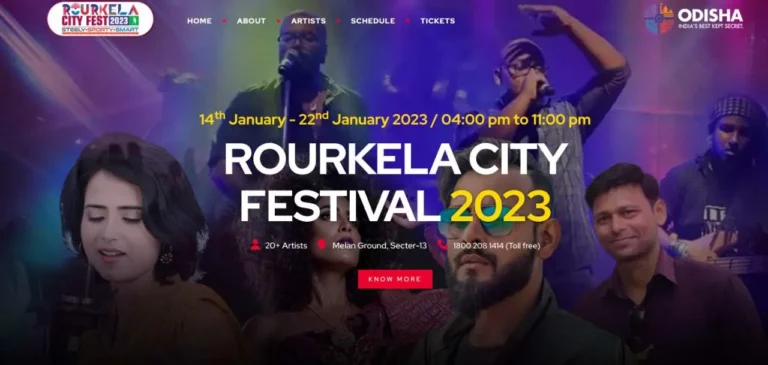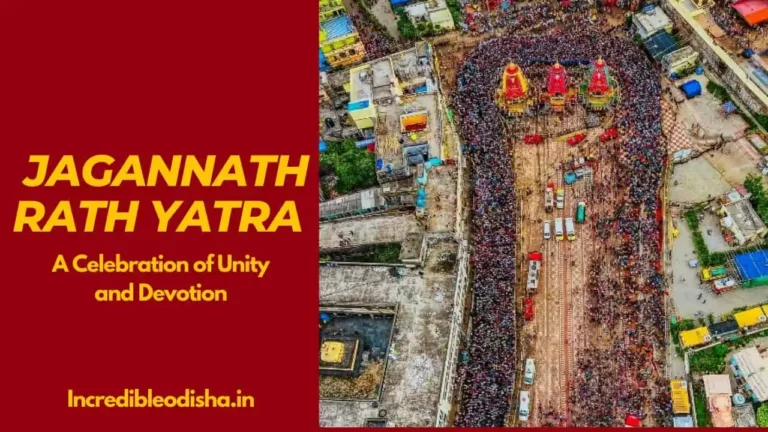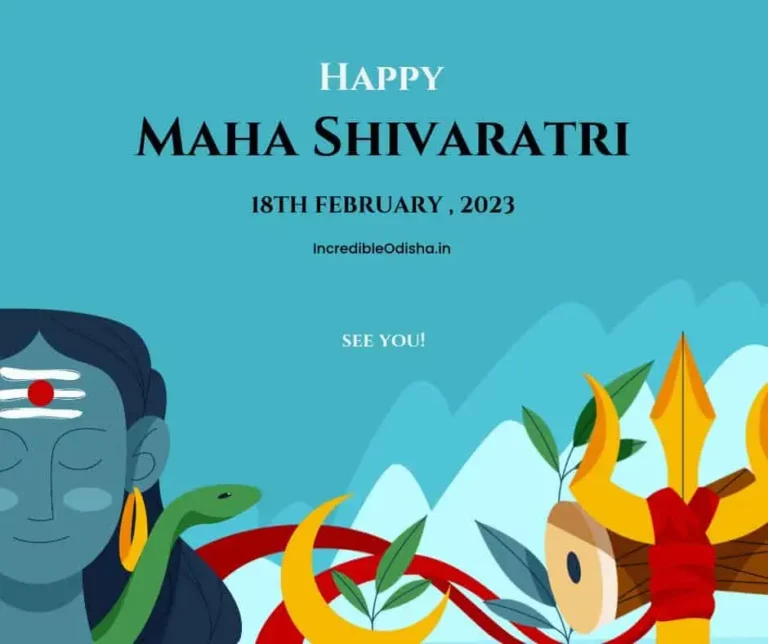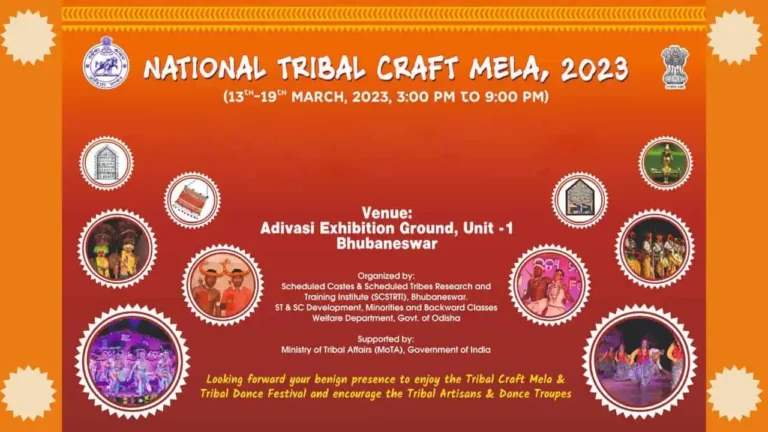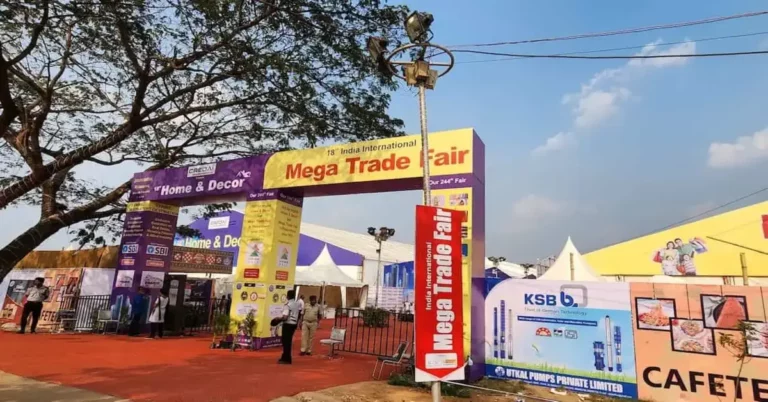Odisha Festivals – Full Details of 13 Festivals in 12 Months
Immerse yourself in the vibrant hues of Odisha’s cultural panorama as we embark on a journey through the state’s rich tapestry of Odisha festivals. Known for its diverse cultural heritage, Odisha, the soul of India, is a land where festivals are not just celebrations, but a way of life.
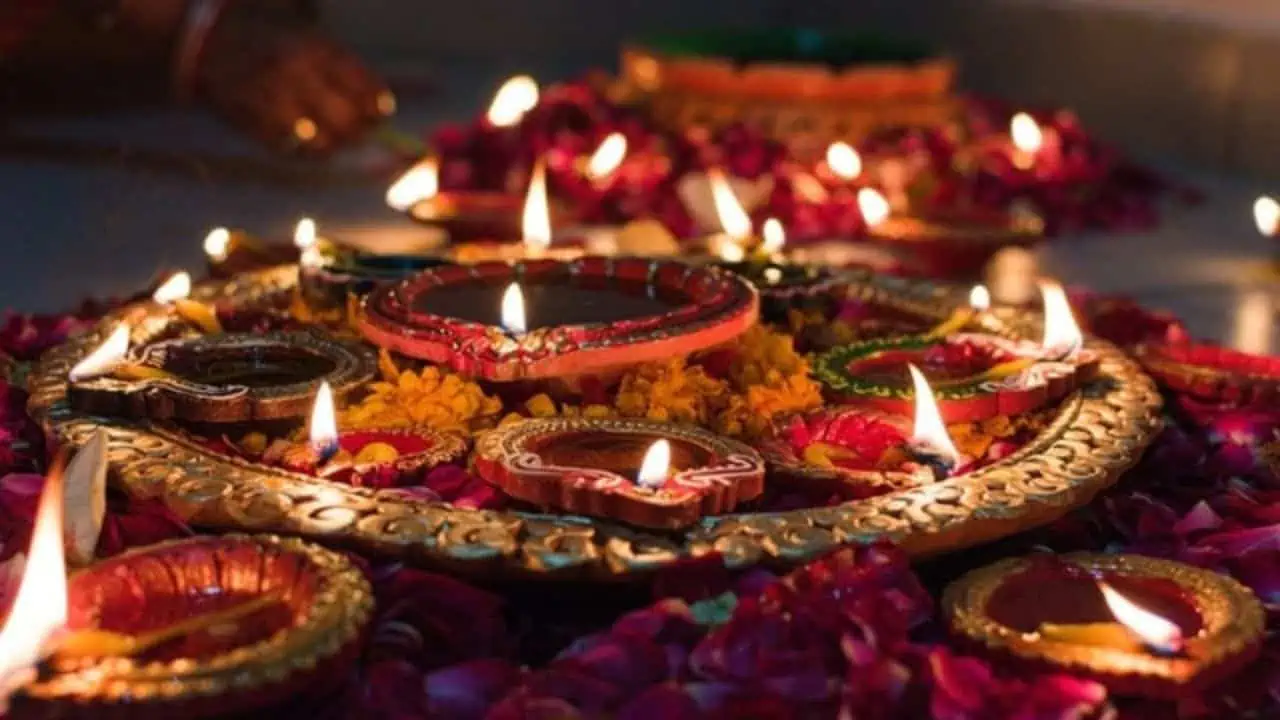
Each festival, steeped in ancient traditions and spiritual significance, paints a vivid picture of the state’s profound religious faith and communal harmony.
From the grand chariot procession of Ratha Yatra to the unique celebration of womanhood in Raja Parba, the joyous dance of colors during Holi to the reverence of the Sun God in Makar Sankranti, each festival is a world in itself.
They offer a glimpse into the state’s deep-rooted customs, its love for art and dance, and its undying spirit of celebration.
Join us as we explore the ‘Odisha Festivals’, a symphony of devotion, joy, and community bonding.
Want to Explore Odisha? Consider reading: 20 Best Places to Visit in Odisha
Discover how these Odisha festivals transcend religious boundaries and unite people, making Odisha a melting pot of cultural festivities.
Odisha Festivals by Month
Here are the festivals celebrated in Odisha by month:
| Month | Festival | Significance |
|---|---|---|
| January | Makar Sankranti | The harvest festival marks the transition of the Sun into the zodiac sign of Capricorn. People fly kites, make bonfires and offer prayers to the Sun god. |
| February | Saraswati Puja | The festival celebrates the meeting of Lord Shiva and Goddess Shakti. Devotees fast for the entire day and night and offer prayers to the Lingam. |
| March | Maha Shivaratri | The festival celebrates the meeting of Lord Shiva and Goddess Shakti. Devotees fast for the entire day and night and offer prayers to the Lingam. |
| April | Rama Navami | The birthday of Lord Rama, the seventh incarnation of Lord Vishnu. People recite the Ramayana, sing bhajans and visit temples dedicated to Rama. |
| May | Akshaya Tritiya | The auspicious day marks the beginning of the construction of the chariots for the Ratha Yatra festival. It is also considered a good day to start new ventures, buy gold or donate to charity. |
| June | Raja Parba | The festival commemorates the ancient maritime trade traditions of Odisha with Southeast Asian countries like Bali, Java and Sumatra. People float paper or cork boats in water bodies as a ritual of Boita Bandana (boat worship). A week-long fair is also held in Cuttack with various stalls, cultural shows and rides. |
| July | Ratha Yatra | The annual chariot festival of Lord Jagannath and his siblings, Balabhadra and Subhadra. It is the biggest festival celebrated in Odisha, attracting millions of devotees from across the world. The deities are taken out in huge wooden chariots from the Jagannath temple to the Gundicha temple, where they stay for nine days. |
| August | Janmashtami | The birthday of Lord Krishna, the eighth incarnation of Lord Vishnu. People observe fasts, perform puja, sing bhajans, and enact scenes from Krishna’s life. Children dress up as Krishna and Radha and participate in various competitions. |
| September | Ganesh Chaturthi | The festival honors the elephant-headed god of wisdom, success, and good luck. People install clay idols of Ganesh in their homes or public places and worship him for ten days. On the last day, the idols are immersed in water bodies with much fanfare. |
| October | Durga Puja / Dussehra | The ten-day festival celebrates the victory of Goddess Durga over the demon Mahishasura. People worship Durga in her various forms in temporary shrines called pandals. The last four days are especially important and involve processions, cultural programs, and the immersion of idols. |
| November | Bali Yatra / Kartika Purnima | The festival commemorates the ancient maritime trade traditions of Odisha with Southeast Asian countries like Bali, Java, and Sumatra. People float paper or cork boats in water bodies as a ritual of Boita Bandana (boat worship). A week-long fair is also held in Cuttack with various stalls, cultural shows, and rides. |
| December | Prathamastami | The festival commemorates the ancient maritime trade traditions of Odisha with Southeast Asian countries like Bali, Java and Sumatra. People float paper or cork boats in water bodies as a ritual of Boita Bandana (boat worship). A week-long fair is also held in Cuttack with various stalls, cultural shows, and rides. |
Makar Sankranti: A Celebration of the Sun’s Journey
Makar Sankranti, also known as Makara Sankranti, is a festival that marks the transition of the sun into the zodiac sign of Makara (Capricorn).
Makar Sankranti signifies the arrival of longer days, as the sun begins its northward journey, marking the end of the winter solstice.
Celebrated with great fervor across India, Makar Sankranti holds a special place in the hearts of the people of Odisha.
Religious Significance
Makar Sankranti is deeply rooted in Hindu mythology and religious beliefs. It is said that on this day, the sun god Surya is worshipped for his power and the life-sustaining properties of sunlight.
Makar Sankranti festival also marks the phase of the harvest season in India, making it a time of thanksgiving to the sun god for a bountiful harvest.
In Odisha, Makar Sankranti is associated with the worship of Lord Jagannath. The day is believed to be the birthday of the deity Surya, and the festival is marked by a special ritual in the Jagannath Temple in Puri.
Customs and Celebrations
The customs and celebrations of Makar Sankranti in Odisha are a blend of devotion, cultural practices, and social festivities.
The day begins with people taking a ritualistic dip in rivers or ponds, believed to cleanse the body and soul. This is followed by prayers and offerings to the sun god.
One of the unique aspects of the festival in Odisha is the preparation and sharing of ‘Makara Chaula’.
This is a special dish made from uncooked newly harvested rice, jaggery, coconut, banana, sesame, and cheese. It is traditionally prepared in a new earthen pot and offered to the gods before being shared among family and friends.
Consider reading: Best Odisha Foods
Kite flying is another popular custom associated with Makar Sankranti. The clear January skies are dotted with colorful kites, as people engage in friendly kite-flying competitions, making the festival a lively and vibrant occasion.
Saraswati Puja
Saraswati Puja, also known as Vasant Panchami, is a festival that marks the preparation for the arrival of spring.
Saraswati Puja is celebrated in different ways across various regions in India, and it also marks the start of preparation for Holika and Holi, which take place forty days later.
Religious Significance
Saraswati Puja is dedicated to the Hindu goddess Saraswati, who is revered as the deity of knowledge, language, music, and all arts.
She symbolizes creative energy and power in all its forms, including longing and love.
Saraswati Puja also celebrates the agricultural fields’ ripening with yellow flowers of the mustard crop, which Hindus associate with Saraswati’s favorite color.
Customs and Celebrations
During Saraswati Puja, people dress in yellow saris or shirts or accessories and share yellow-colored snacks and sweets. Some even add saffron to their rice and then eat yellow-cooked rice as a part of an elaborate feast.
Many families mark this day by sitting with babies and young children, encouraging their children to write their first words with their fingers, and some study or create music together.
In temples and educational institutions, statues of Saraswati are dressed in yellow and worshipped.
Many educational institutions arrange special prayers or pujas in the morning to seek the blessing of the goddess. Poetic and musical gatherings are held in some communities in reverence for Saraswati.
In the state of Odisha, the festival is celebrated as Basanta Panchami/Sri Panchami /Saraswati Puja.
Homes and Yagnas are done in schools and colleges across the state. Students celebrate Saraswati puja with great sincerity and fervor.
Usually, children four and five years old start learning on this day in a unique ceremony named ‘Khadi-Chuan’ or ‘Vidya-Arambha’.
Maha Shivaratri
Maha Shivaratri, also known as ‘The Great Night of Shiva’, is a significant Hindu festival celebrated annually in honor of the deity Shiva.
Maha Shivaratri usually takes place between February and March, according to the Hindu calendar.
The festival commemorates the wedding of Shiva and Parvati, and the occasion when Shiva performs his divine dance, called the Tandava.
Significance and Customs
Maha Shivaratri is a festival of introspection and spiritual awakening. It marks the remembrance of “overcoming darkness and ignorance” in life and the world.
Devotees observe this day by fasting, chanting prayers, meditating on ethics and virtues such as honesty, non-injury to others, charity, forgiveness, and the discovery of Shiva.
Ardent devotees stay awake throughout the night, while others visit Shiva temples or go on a pilgrimage to the Jyotirlingams.
The festival is characterized by maintaining a ‘Jagara’, an all-night vigil and prayers, as Shaiva Hindus mark this night as “overcoming darkness and ignorance” in one’s life and the world through Shiva.
Offerings of fruits, leaves, sweets, and milk are made to Shiva, some perform all-day fasting with Vedic or tantric worship of Shiva, and some perform meditative yoga.
In Shiva temples, the sacred Panchakshari mantra of Shiva, “Om Namah Shivaya” is chanted throughout the day.
Legends and Stories
There are several legends associated with Maha Shivaratri. According to one legend in the Shaivism tradition, this is the night when Shiva performs the heavenly dance of creation, preservation, and destruction.
The chanting of hymns, the reading of Shiva’s scriptures, and the chorus of devotees join this cosmic dance and remember Shiva’s presence everywhere.
Another legend states that this is the night when Shiva and Parvati got married.
A different legend states that the offering to Shiva icons such as the linga is an annual occasion to get over past sins if any, to restart on a virtuous path and thereby reach Mount Kailasha and liberation.
Celebrations Across the World
Maha Shivaratri is celebrated with great fervor not only in India but also in Nepal, where it is a national holiday, and among the Shaiva Hindu diaspora from Nepal and India.
In Indo-Caribbean communities, thousands of Hindus spend the beautiful night in over four hundred temples across multiple countries, offering special jhalls (an offering of milk and curd, flowers, sugarcane, and sweets) to Shiva.
In Mauritius, Hindus go on a pilgrimage to Ganga Talao.
Maha Shivaratri is one of the most popular Odisha Festivals celebrated across the state.
Rama Navami
Rama Navami is a Hindu festival that celebrates the birth of Lord Rama, one of the most revered deities in Hinduism and the seventh avatar of Vishnu.
Lord Rama is often held as an emblem within Hinduism for being an ideal king and human through his righteousness, good conduct, and virtue.
The festival falls on the ninth day of the bright half (Shukla Paksha) of the lunar cycle of Chaitra (March-April), the first month in the Hindu calendar.
It is also part of the Chaitra Navaratri festival in spring.
Significance and Customs
Rama Navami is a day of moral reflection for many Hindus. The rituals and customs associated with Rama Navami vary from region to region throughout India.
The day is marked by reciting from the Hindu epic Ramayana, which narrates the tale of Rama.
Vaishnava Hindus celebrate the festival by visiting temples, praying, fasting, listening to spiritual discourses, and singing bhajans or kirtans (devotional songs).
Some devotees offer worship to Rama like an infant by placing an image of him in a cradle. Charitable events and community meals are also organized.
Rama Navami is a festival that brings together millions of Hindus from around the world, united in their devotion to Rama, and their pursuit of moral reflection and spiritual awakening.
The festival’s rituals, legends, and significance make it a profound and deeply meaningful occasion in the Hindu calendar.
Akshaya Tritiya: The Day of Unending Prosperity
Akshaya Tritiya, also known as Akti or Akha Teej, is a significant annual spring festival celebrated by both Jains and Hindus.
The festival falls on the third lunar day of the bright half (Shukla Paksha) of the Hindu month of Vaisakha. The term “Akshaya” in Sanskrit means “never decreasing” in the sense of “prosperity, hope, joy, success”, while “Tritiya” means “third phase of the moon”.
Thus, the festival signifies the “third day of unending prosperity”.
Customs and Significance in Odisha
In Odisha, Akshaya Tritiya is celebrated with a unique agricultural significance. The festival marks the commencement of the sowing of rice paddy for the ensuing Kharif season.
The day begins with the ritual worship of Mother Earth, the bullocks, other traditional farm equipment, and seeds by the farmers for the blessings of a good harvest.
After plowing the fields, the farmers sow paddy seeds as the symbolic start for the most important Kharif crop of the state.
This ritual is called Akhi Muthi Anukula (Akhi- Akshaya Tritiya; Muthi- a fistful of paddy; Anukula- commencement or inauguration) and is celebrated with much fanfare throughout the state.
Moreover, the construction of chariots for the Ratha Yatra festivities of Jagannath Temple also commences on this day at Puri.
This day is considered highly auspicious for starting new ventures, making significant purchases, and performing charitable acts.
Raja Parba: Celebrating Womanhood and the Onset of Monsoon
Raja Parba, also known as Mithuna Sankranti, is a unique festival celebrated in Odisha, India, that honors womanhood.
Raja Parba is a three-day-long festival that is deeply rooted in the agricultural traditions of the state and is associated with the onset of the monsoon season.
Significance and Customs in Odisha
Raja Parba is believed to be the menstruation period of Mother Earth. The first day is called ‘Pahili Raja’, the second day is ‘Mithuna Sankranti’, and the third day is ‘Bhudaaha or Basi Raja’.
The final fourth day is called ‘Basumati Snana’, in which the ladies bathe the grinding stone as a symbol of Bhumi with turmeric paste and adorn it with flowers, sindoor, etc. All types of seasonal fruits are offered to Mother Earth.
During these three days, women and girls take a break from work and wear new sarees, alata, and ornaments. They eat only uncooked and nourishing food, especially Podapitha.
They do not take a bath or take salt, do not walk barefoot, and vow to give birth to healthy children in the future.
The most vivid and enjoyable memories one has of the Raja gaiety are the rope swings on big banyan trees and the lyrical folk songs that one listens to from the nubile beauty enjoying the atmosphere.
Raja Parba is one of the most popular Odisha Festivals celebrated across the state.
Ratha Yatra
Ratha Yatra, also known as Ghosha Jatra, is a significant religious festival observed by Hindus in Odisha, particularly in the city of Puri.
Ratha Yatra festival is considered the oldest and largest Hindu chariot festival celebrated annually, on the bright half of the lunar month of Ashadh (June–July).
Religious Significance and Customs
The festival is associated with the deity Jagannath, a form of Vishnu or Krishna.
During the festival, three deities (Jagannath, his brother Balabhadra, and sister Subhadra) are drawn by a multitude of devotees in three massive, wooden chariots on Bada Danda (the grand avenue) to Gundicha Temple. They reside there for a week and then return to the Jagannath temple.
The Ratha Yatra of the ‘four deities’ takes place on the 2nd day of the bright fortnight of Ashadha for the overall well-being of mankind.
In the Skanda Purana, it has been described that no festival of Mahaprabhu is more important than that of the Shree Gundicha Yatra (Rath Yatra).
Unique Rituals
On their way back from the Gundicha Temple, the three deities stop for a while near the Mausi Maa Temple (Aunt’s abode) and have an offering of the Poda Pitha, which is a special type of pancake supposed to be the deity’s favorite.
After a stay of seven days, the deities return to their abode.
The Chariots
The three chariots of Jagannath, Balabhadra, and Subhadra are newly constructed every year with wood of specified trees like phassi, dhausa, etc.
They are customarily brought from the ex-princely state of Dasapalla by a specialist team of carpenters who have hereditary rights and privileges for the same.
The logs are traditionally set afloat as rafts in the river Mahanadi. These are collected near Puri and then transported by road.
Ratha Yatra is a festival of immense religious and cultural significance in Odisha, marked by grandeur, devotion, and the unique ritual of deity procession in chariots.
Ratha Yatra is a festival that brings together people from all walks of life in a celebration of faith and tradition.
Jagannath Rath Yatra is one of the most popular Odisha Festivals across the globe and is celebrated all around the world.
Krishna Janmashtami
Krishna Janmashtami, also known as Janmashtami or Gokulashtami, is a significant Hindu festival that celebrates the birth of Lord Krishna, who is considered the eighth avatar of Lord Vishnu.
Krishna Janmashtami festival is observed according to the Hindu lunisolar calendar, on the eighth day (Ashtami) of the Krishna Paksha (dark fortnight) in Shraavana or Bhadrapad, which typically falls in late August or early September.
In Odisha, the festival is celebrated with great fervor and devotion. The temples of Lord Krishna are beautifully decorated and special rituals are performed.
Devotees observe fasts and engage in singing devotional songs, dancing, and reciting passages from the Bhagavad Gita. The ‘Janma’ (birth) of Lord Krishna is celebrated at midnight with much enthusiasm.
The idol of Lord Krishna is bathed with panchamrita (a mixture of milk, ghee, curd, honey, and Gangajal), dressed in new clothes, and worshipped.
The devotees break their fast by sharing sweets and prasad after the birth of Lord Krishna is celebrated.
In some parts of Odisha, the festival is also marked by the popular tradition of ‘Dahi Handi’, where teams of young men form human pyramids to reach and break an earthen pot filled with curd, hung high in the air, symbolizing the playful and mischievous nature of young Krishna.
Ganesh Chaturthi
Ganesh Chaturthi, also known as Vinayaka Chaturthi, is a Hindu festival that celebrates the birth of Ganesha, the elephant-headed deity who is the god of beginnings and the remover of obstacles.
It is observed during the Hindu month of Bhadra (mid-August to mid-September) and lasts for 10 days, ending on Anant Chaturdashi.
In Odisha, Ganesh Chaturthi is celebrated with great fervor. The festival begins with the installation of Ganesha idols in homes and public places.
These idols are beautifully decorated and worshipped with offerings of sweets, flowers, and prayers.
The ritual of Pranapratishhtha is performed to invoke the presence of Ganesha in the idol, followed by a 16-step ritual known as Shodashopachara.
The celebrations in Odisha are marked by cultural events and performances. Devotional songs and dances are performed, and local artists often showcase their talents during this time.
The festival also sees the preparation of a variety of traditional sweets and dishes, with Modak being a popular offering to Ganesha.
On the tenth day, the idols are taken out in a grand procession for immersion in a river or sea, a ritual known as Ganesh Visarjan. This symbolizes Ganesha’s journey towards his abode in Kailash, taking away with him the misfortunes of his devotees.
Durga Puja
Durga Puja, also known as Durgotsava or Sharodotsav, is a significant annual Hindu festival that pays homage to the Hindu goddess Durga.
Durga Puja festival is celebrated worldwide by the Hindu community, but it holds particular traditional significance in the Indian states of West Bengal, Bihar, Assam, Tripura, Odisha, Jharkhand, Uttar Pradesh (eastern parts), and the country of Bangladesh.
In Odisha, Durga Puja is celebrated with great fervor and enthusiasm. The festival is observed in the Indian calendar month of Ashwin, which corresponds to September–October in the Gregorian calendar.
Durga Puja is a ten-day festival, of which the last five are of the most significance. The festival includes worshipping Hindu deities, family and other social gatherings, shopping, and gift-giving, feasting, visiting pandals (temporary structures for hosting the puja), and cultural events. The main observation is the ceremonial worship of the goddess Durga.
The primary goddess revered during Durga Puja is Durga, but celebrations also include other major deities of Hinduism such as Lakshmi (the goddess of wealth and prosperity), Saraswati (the goddess of knowledge and music), Ganesha (the god of good beginnings), and Kartikeya (the god of war).
In Bengali and Odia traditions, these deities are considered to be Durga’s children, and Durga Puja is believed to commemorate Durga’s visit to her natal home with her beloved children.
The festival ends on the tenth day (Vijaya Dashami) when devotees embark on a procession carrying the worshipped clay sculpture idols to a river, or other water body, and immerse them, symbolic of her return to the divine cosmos and her marital home with Shiva in Kailash.
Over the years, Durga Puja has morphed into an inseparable part of Indian culture with a diverse group of people celebrating this festival in their unique way while on tradition.
In modern times, the importance of Durga Puja is more as a social and cultural festival than a religious one, wherever it is observed.
Bali Yatra / Kartika Purnima
Bali Yatra, literally meaning ‘Voyage to Bali’, is a significant cultural festival held in Odisha, particularly in the city of Cuttack.
The Bali Yatra festival is celebrated on Kartika Purnima (full moon day of the month of Kartika) in the Odia calendar, which usually falls in November.
Historical Significance and Customs
Bali Yatra commemorates the ancient maritime trade traditions of Odisha with Southeast Asian countries like Bali, Java, Sumatra (all in Indonesia), and Sri Lanka.
It marks the day when ancient Sadhabas (Odia mariners) would set sail to these distant lands for trade and cultural expansion.
The Bali Yatra festival is a tribute to the rich maritime legacy of ancient Odisha.
On Kartika Purnima, people of Odisha gather near banks of rivers, ponds, and sea shores to float miniature toy boats, made of colored paper, dried banana tree barks, and cork, as a symbolic gesture of their ancestors’ voyage.
These toy boats contain traditional paan and small oil lamps, which are lit and placed inside them, providing an attractive sight during the festival.
Bali Yatra Fair at Cuttack
In Cuttack, Bali Yatra is celebrated annually as a large open fair near the Barabati Fort area. It is considered to be one of Asia’s largest open trade fairs.
The Bali Yatra fair features numerous stalls selling toys, curiosities, and other gifts, along with food stalls offering Odia delicacies.
Cultural programs and performances are also a significant part of the celebrations.
Every year, millions of people from all around the world visit Bali Yatra to experience it.
Modern Recognition
In 2022, Bali Yatra etched its name in the Guinness Book of World Records when more than 2100 students from 22 schools made over 22,000 paper boats in 35 minutes, creating a world record.
Prathamastami: A Celebration of the Eldest Child
Prathamastami is a unique festival celebrated in Odisha that pays homage to the eldest child in a family.
The Prathamastami festival is observed on the eighth day (Ashtami) of the waning phase of the moon in the month of Margashira, according to the Odia calendar. This usually falls in November or December.
Significance and Customs
Prathamastami is a rite of praying for the life and prosperity of the eldest child of a family. The first child, after completion of its first year, is made to wear new clothes and offered a lighted lamp ovation by the senior female relatives. This is followed by elaborate rituals during which mantras are recited.
The maternal uncle plays a significant role in this festival. He sends the items necessary for the rituals, including new clothes, coconut, jaggery, newly harvested rice, black gram, turmeric leaves, and more.
The family deity, along with Ganesha and Shashti Devi, are worshipped during the festival.
Culinary Delights
The main delicacy of the day is Enduri Pitha, a traditional Odia dish. It is a type of steamed cake made with rice flour and black gram, filled with a mixture of coconut, jaggery, and spices, and wrapped in a turmeric leaf before being steamed.
The unique flavor of the turmeric leaf is infused into the Pitha during steaming, making it a special treat enjoyed during the festival.
Prathamastami is a festival that not only celebrates the eldest child in a family but also brings together family members in a grand celebration of life and prosperity.
Prathamastami is a festival that showcases the rich cultural traditions and familial bonds of Odisha.
Closing Thoughts on Odisha Festivals
In the heart of India, Odisha stands as a vibrant testament to the country’s rich cultural heritage, a testament that is beautifully reflected in its myriad of festivals.
Each celebration, from the grandeur of Ratha Yatra to the unique traditions of Prathamastami, tells a tale of faith, unity, and the indomitable spirit of its people.
As we conclude our journey through the festive calendar of Odisha, we hope you’ve been inspired by the state’s profound traditions, its colorful celebrations, and its deep-rooted spirituality.
So, here’s to the spirit of Odisha, a land where every day is a celebration, and every festival is a testament to its rich cultural tapestry.
As we say in Odia, “Aapananka Pain Dhanyabad” (Thank you for joining us). Until next time, keep the spirit of celebration alive!
Follow us on Instagram – Incredible Odisha
FAQs on Odisha Festivals
What is Odisha famous for festivals?
Odisha is famous for the Jagannath Ratha Yatra festival, a highly anticipated event in India due to its rich historical and religious importance. This traditional festival attracts millions of devotees who come to witness the grand procession of Lord Jagannath’s chariot. Experience the vibrant culture and spirituality of Odisha during this iconic festival.
What are the two famous festivals of Odisha?
Apart from Durga Puja, the second famous festival of Odisha is Ratha Yatra or the chariot festival. This popular festival attracts people from all over the country and even the world to celebrate in Odisha. It takes place during the Jyestha month on a full moon night. Embrace the vibrant festivities of Ratha Yatra in Odisha!
What are the major festivals celebrated in Odisha?
Odisha celebrates a wide array of festivals throughout the year. Some of the major ones include Ratha Yatra, Durga Puja, Konark Dance Festival, Bali Yatra, Makar Sankranti, Saraswati Puja, Maha Shivaratri, Rama Navami, Akshaya Tritiya, Raja Parba, Janmashtami, Ganesh Chaturthi, and Prathamastami.
What is the significance of Ratha Yatra in Odisha?
Ratha Yatra is one of the most significant and oldest festivals of Odisha. It is dedicated to Lord Jagannath, his brother Balabhadra, and sister Subhadra. The deities are taken out in a grand procession in huge wooden chariots from the Jagannath temple to the Gundicha temple, where they stay for nine days.
How is Durga Puja celebrated in Odisha?
Durga Puja in Odisha is celebrated with great fervor and enthusiasm. The festival includes worshipping Hindu deities, family and other social gatherings, shopping and gift-giving, feasting, visiting pandals (temporary structures for hosting the puja), and cultural events.
What is unique about the Raja Parba festival?
Raja Parba is a unique festival celebrated in Odisha that honors womanhood. It is associated with the onset of monsoon and the agricultural cycle. Women wear new clothes, play swings, apply alta (red dye) on their feet, and enjoy various delicacies.
What is the Bali Yatra festival?
Bali Yatra, literally meaning ‘Voyage to Bali’, is a significant cultural festival held in Odisha. It commemorates the ancient maritime trade traditions of Odisha with Southeast Asian countries. On Kartika Purnima, people float miniature toy boats, made of colored paper, dried banana tree barks, and cork, as a symbolic gesture of their ancestors’ voyage.
How is Prathamastami celebrated in Odisha?
Prathamastami is a unique festival celebrated in Odisha that pays homage to the eldest child in a family. The first child, after completion of its first year, is made to wear new clothes and offered a lighted lamp ovation by the senior female relatives. This is followed by elaborate rituals during which mantras are recited. The main delicacy of the day is Enduri Pitha, a traditional Odia dish.
